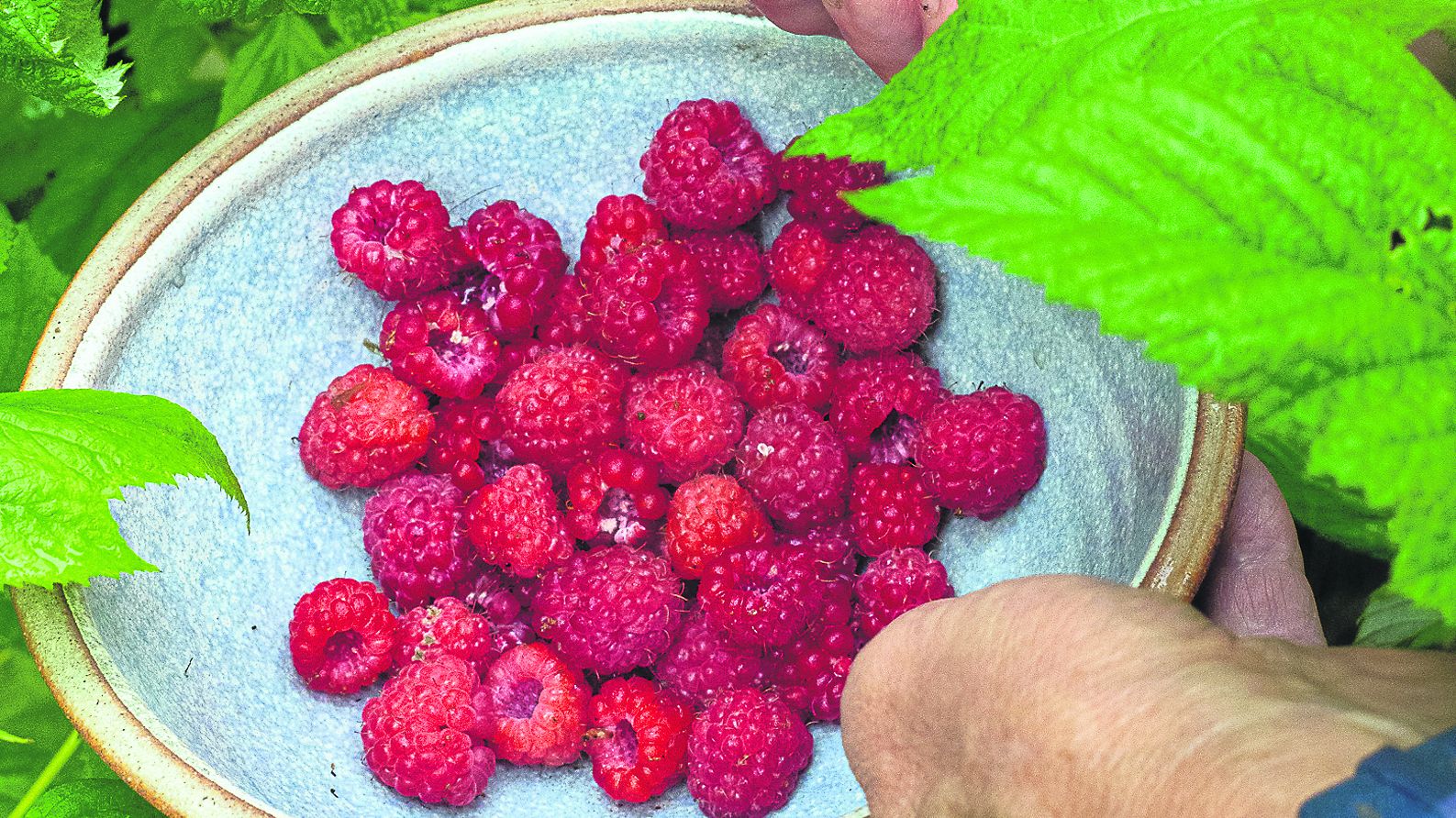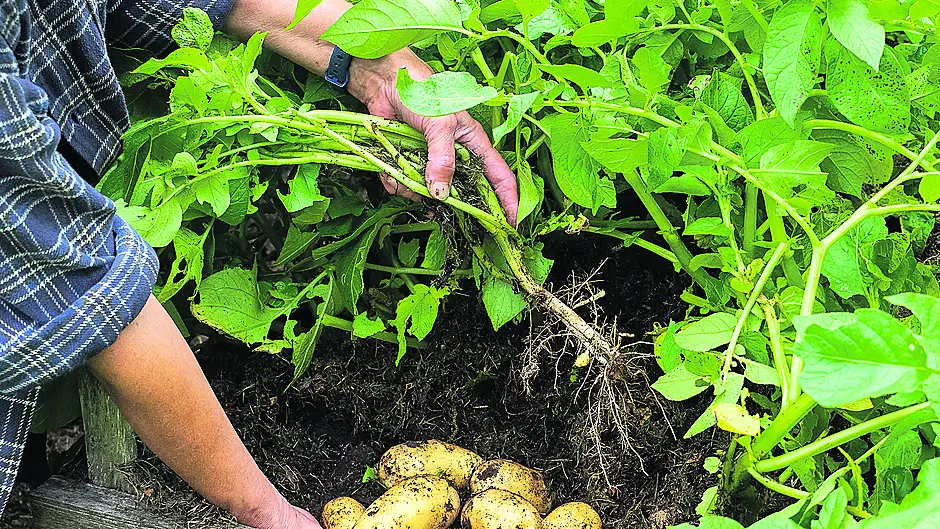By Joyce Russell
IT’S always worth doing a review of the fruit and veg plot at this time of year. Take a few photographs and you will have these to compare in future years. This year has been a great one so far for some crops – early potatoes have produced lots of delicious spuds. A bumper crop by the look of things and thankfully clear of the scab that spoiled a lot of my spuds last year.
Autumn onions are swelling nicely and autumn planted garlic is almost ready to lift. The onions sets I planted were so small that I feared they wouldn’t make big enough plants to sustain good bulb growth. A long time in the ground does help, and they look just fine. Very few of them bolted and the weather has given them the conditions they like. The jury is out on the spring planted sets – these too were tiny and it has to be seen if they can put on growth and swell any bulbs over the next few weeks.
There are lots of tomatoes just starting to ripen and courgettes and cucumbers are settling into prolific production. Peas and beans of all types are thriving. It looks like a good year for all these crops, so pick, eat, and enjoy each one while they are at their perfect best.
Plant out winter brassicas
If you sowed kales, cabbages, cauliflowers and purple sprouting broccoli, in April, then plants should be a good size to go out into the ground now.
They need to have a few good sized leaves and to be around 20cm tall if they are to stand the best chance of establishing quickly.
Always get these plants in the ground before they become root-bound, or suffer stress in small pots of dry compost. Brassicas can produce lots of leaf if the soil is enriched with a little nitrogen – don’t add too much or you might get soft growth at the expense of hardiness.
Most of these crops need to stand through some, or all, winter months and with a bit of care, they will produce great harvests. Dig a little well-rotted compost or manure into the bed. Add a scatter of lime over the surface if soil is acidic and you are all ready to start planting.
Allow 60cm between kale and broccoli plants in a row and 45cm between cabbages and cauliflowers. Water each plant in well and knock in a stick next to each one. Put a ‘collar’ around each plant to protect from cabbage root fly (cut an old compost bag into 15cm squares and fit two of these overlapping around each stem).
Cover the new planted bed with crop cover to protect young plants from bright sun – this is raised over the sticks used to mark each plant and edges can be held down with stones. Once plants are established and growing well, the cover can be removed.
Brassicas need little attention. Keep them watered in dry weather, provide stakes to support tall plants, and deal with pests such as caterpillars, slugs and snails, before they cause damage.
 Enjoy delicious fresh-picked raspberries from the garden.
Enjoy delicious fresh-picked raspberries from the garden.Enjoy a fruit feast
Raspberries are ripening nicely and early blueberry bushes have some ripe fruit too. Cherries are only a week or two away and some fruits always ripen earlier than others.
Keep an eye on all of these and on the currants and strawberries too. Use nets to protect against birds and keep an eye out for slug or ant damage. Your home-grown fruit is one of the best treats from the garden and you don’t want to waste a bit.
Pick as soon as fruit is ripe, even if that means taking just one or two from a cluster. Enjoy the fresh picked berries and any surplus will freeze very well for use in the autumn and winter.
A word on pumpkins
These plants like heat, so I keep mine a little warmer by covering with crop cover until plants start to flower. Uncover them at this point so insects can help to set fruits. And if fruit doesn’t seem to be setting, break off a male flower and spread the pollen on the stamens of any flower that has a tiny pumpkin shaped fruitlet right behind it.
Keep plants watered well in dry weather and remember that you can direct the long rambling stems where you want them to go. Try not to let pumpkin foliage invade other plants that are trying to grow.
 Joyce says now is the time to plant out winter brassicas.
Joyce says now is the time to plant out winter brassicas.Blackfly
Check the tops of broad bean plants for clusters of little bugs. These are like greenfly but a darker colour. Cut out any affected tips and try to keep plants clear. The softer growth of spring planted beans is usually more affected than tougher over-wintered ones. Seal the tops in a bag until the flies are killed.









